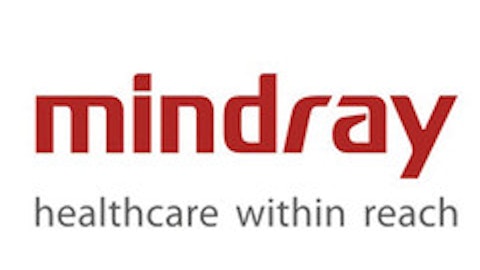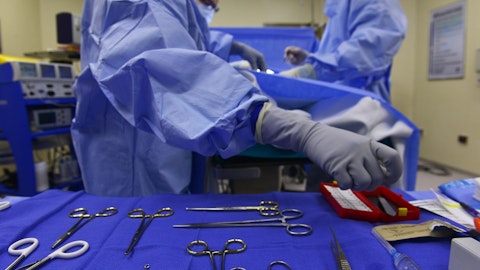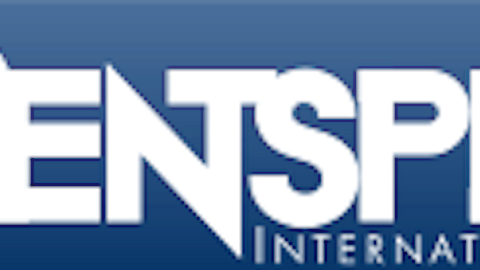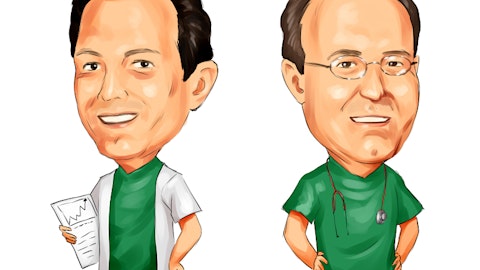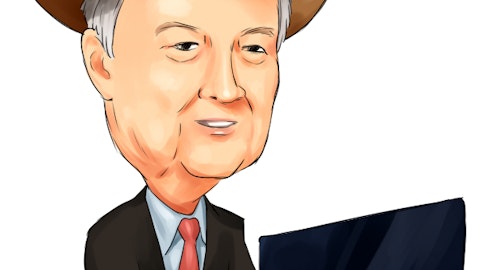Bard’s Key Risks
The healthcare landscape is rapidly evolving in the U.S., and medical device manufacturers such as Bard must successfully adapt to remain competitive.
Hospitals are increasingly focused on consolidating the number of suppliers they do business with to streamline their costs. As their purchasing power increases, price pressure increases on medical device manufacturers. Smaller suppliers will likely be forced to consolidate as a result, and many of Bard’s markets seem likely to remain fiercely competitive.
Government reimbursement programs pose another risk. Many of Bard’s customers use funds from Medicare and Medicaid to pay for a substantial portion of their medical device purchases. As we noted with HCP, changing reimbursement models as a result of healthcare reform can significantly alter the profitability and demand of healthcare products and services.
Bard’s diversification by customer, disease area, and product help diversify away some of this risk, but there’s no telling how the future might play out with healthcare regulations and reimbursements. The good news is that healthcare reform in the U.S. has resulted in millions of Americans getting insurance coverage, which results in additional demand for medical devices.
Healthcare reform has also brought new taxes to the medical device industry. Starting in 2013, the medical device industry was required to subsidize healthcare reform by paying a 2.3% tax on U.S. sales of medical devices. However, the tax was recently suspended for 2016 and 2017.
Bard must navigate the changes caused by healthcare reform and continue investing in innovation to stay ahead of the fast pace of change in many of its medical device markets. However, the company seemingly has the financial health, track record, business diversification, and expertise to remain relevant for a long time to come.
Dividend Analysis: Bard
We analyze 25+ years of dividend data and 10+ years of fundamental data to understand the safety and growth prospects of a dividend. Bard’s long-term dividend and fundamental data charts can all be seen by clicking here.
Dividend Safety Score
Our Safety Score answers the question, “Is the current dividend payment safe?” We look at factors such as current and historical EPS and FCF payout ratios, debt levels, free cash flow generation, industry cyclicality, ROIC trends, and more. Scores of 50 are average, 75 or higher is very good, and 25 or lower is considered weak.
Bard’s dividend is rock solid with a Dividend Safety Score of 97. Bard’s free cash flow payout ratio over the last 12 months is just 10%, which has been fairly consistent with the company’s past 10 fiscal years (see below).
C R Bard Inc (NYSE:BCR) has plenty of flexibility to continue paying and growing its dividend, but the company has instead reinvested in the business with acquisitions and repurchased more than 25% of its diluted shares outstanding over the last 10 years.

Source: Simply Safe Dividends
Another factor helping Bard’s high Dividend Safety Score is the company’s strong performance during recessions. Bard’s sales grew by 3% in 2009, and its free cash flow increased each year during the recession. Sick patients still need treatment during economic downturns, which is one reason why healthcare is one of the best stock sectors for dividend income. Bard’s stock also fared well during 2008 and outperformed the S&P 500 by 26%.

Source: Simply Safe Dividends
Bard has also been a free cash flow machine. Free cash flow allows a company to sustainably pay a dividend, repurchase shares, reduce debt, and acquire businesses to create shareholder value. The consumable nature of Bard’s products and their high-value applications allow the company to generate healthy cash flows.

Source: Simply Safe Dividends

